-
 bitcoin
bitcoin $122090.672462 USD
1.59% -
 ethereum
ethereum $4493.758974 USD
0.56% -
 xrp
xrp $3.033145 USD
0.65% -
 tether
tether $1.000629 USD
0.00% -
 bnb
bnb $1169.854250 USD
7.07% -
 solana
solana $230.954786 USD
-0.19% -
 usd-coin
usd-coin $0.999785 USD
0.00% -
 dogecoin
dogecoin $0.256108 USD
-1.12% -
 tron
tron $0.342333 USD
-0.12% -
 cardano
cardano $0.859632 USD
-0.10% -
 hyperliquid
hyperliquid $48.932146 USD
-2.25% -
 chainlink
chainlink $22.345466 USD
-1.29% -
 ethena-usde
ethena-usde $1.000217 USD
-0.03% -
 avalanche
avalanche $31.203456 USD
1.93% -
 sui
sui $3.579145 USD
1.05%
What is a Rollup (Optimistic vs. ZK)?
Rollups boost blockchain scalability by processing transactions off-chain and posting compressed data to Ethereum, reducing fees while maintaining security.
Sep 22, 2025 at 03:00 pm
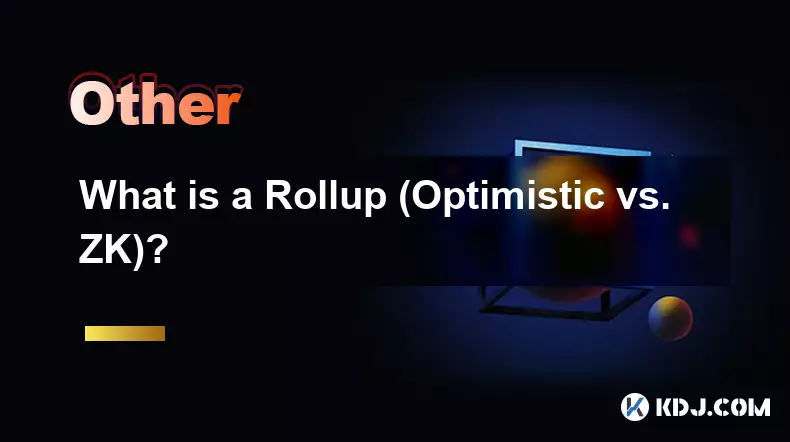
Understanding Rollups in Blockchain Technology
1. Rollups are layer-2 scaling solutions designed to increase transaction throughput on blockchains like Ethereum by processing transactions off the main chain while still leveraging its security. They achieve this by bundling multiple transactions into a single data batch and posting it to the mainnet, significantly reducing congestion and gas fees.
2. Two primary types of rollups dominate the current landscape: Optimistic Rollups and Zero-Knowledge (ZK) Rollups. Both aim to enhance scalability but differ fundamentally in their approach to validation and trust assumptions.
3. By moving computation and state storage off-chain, rollups allow Ethereum to handle more activity without compromising decentralization or security. This makes them essential tools in addressing the blockchain trilemma—balancing scalability, security, and decentralization.
Optimistic Rollups: Trust Through Challenge Periods
1. Optimistic Rollups operate under the assumption that all transactions are valid by default. They do not perform immediate cryptographic proofs for each transaction bundle. Instead, they rely on a dispute resolution mechanism known as a fraud proof.
2. During a challenge period—typically seven days—any network participant can scrutinize the posted transaction batch and submit a fraud proof if they detect invalid activity. If proven correct, the malicious actor is penalized, and the incorrect state is reverted.
3. Because no complex computations are required at submission time, Optimistic Rollups are easier to implement for general-purpose smart contracts. Projects like Arbitrum and Optimism use this model, enabling full EVM compatibility.
4. The downside lies in withdrawal delays. Users must wait through the challenge window before funds can be moved back to Layer 1, creating friction for time-sensitive transfers.
ZK-Rollups: Validity Through Cryptographic Proof
1. ZK-Rollups take a different approach by requiring cryptographic proof with every batch submission. These validity proofs, typically using zk-SNARKs or zk-STARKs, mathematically guarantee that the new state resulted from correctly executing the included transactions.
2. Since the proof itself ensures correctness, there is no need for a long verification window. Once the proof is verified on-chain, funds can be withdrawn immediately, eliminating the delay inherent in Optimistic systems.
3. ZK-Rollups offer stronger security guarantees and faster finality but face higher development complexity. Generating zero-knowledge proofs demands significant computational resources and specialized tooling, making general smart contract support more challenging.
4. Notable implementations include StarkNet, zkSync, and Polygon Hermez, which focus on balancing performance with expanding programmability over time.
Comparative Trade-offs in Rollup Design
1. Data availability remains a shared requirement: both rollup types publish transaction data on Layer 1 to ensure transparency and prevent censorship. However, how they verify execution differs drastically.
2. Optimistic Rollups currently lead in ecosystem maturity and developer adoption due to EVM equivalence. Smart contracts written for Ethereum require minimal changes to function within these environments.
3. ZK-Rollups excel in efficiency and instant finality, making them ideal for high-frequency applications such as exchanges and gaming platforms where rapid fund movement is critical.
4. Cost structures vary. While ZK-Rollups have higher proving costs off-chain, their on-chain verification is cheap and predictable. In contrast, Optimistic Rollups have lower initial overhead but risk unexpected costs during fraud challenges.
Frequently Asked Questions
What happens if someone tries to submit fraudulent data in an Optimistic Rollup?Network validators monitor state updates. If fraud is detected, a challenger can submit a fraud proof during the dispute window. A game-like interactive verification process then executes on-chain to pinpoint the erroneous step, penalizing the dishonest sequencer and correcting the state.
Are ZK-Rollups more secure than Optimistic Rollups?Security models differ rather than one being universally superior. ZK-Rollups provide cryptographic certainty of validity, removing reliance on honest minority assumptions. Optimistic Rollups depend on at least one honest observer to detect fraud. In practice, both inherit Ethereum’s base-layer security when implemented correctly.
Can users interact with rollups directly from standard wallets?Yes. Most major wallets including MetaMask support interaction with rollup networks. Users simply add the rollup’s network configuration and bridge assets from Layer 1. Transactions appear nearly identical, though gas fees are denominated in the rollup’s native token or ETH.
Do rollups eliminate gas fees entirely?No. While rollups dramatically reduce costs by batching transactions and minimizing data posted to Layer 1, users still pay fees for computation and storage. These fees are orders of magnitude lower than direct L1 usage but fluctuate based on rollup demand and underlying Ethereum congestion.
Disclaimer:info@kdj.com
The information provided is not trading advice. kdj.com does not assume any responsibility for any investments made based on the information provided in this article. Cryptocurrencies are highly volatile and it is highly recommended that you invest with caution after thorough research!
If you believe that the content used on this website infringes your copyright, please contact us immediately (info@kdj.com) and we will delete it promptly.
- BlockDAG, DOGE, HYPE Sponsorship: Crypto Trends Shaping 2025
- 2025-10-01 00:25:13
- Deutsche Börse and Circle: A StableCoin Adoption Powerhouse in Europe
- 2025-10-01 00:25:13
- BlockDAG's Presale Buzz: Is It the Crypto to Watch in October 2025?
- 2025-10-01 00:30:13
- Bitcoin, Crypto, and IQ: When Genius Meets Digital Gold?
- 2025-10-01 00:30:13
- Stablecoins, American Innovation, and Wallet Tokens: The Next Frontier
- 2025-10-01 00:35:12
- NBU, Coins, and Crypto in Ukraine: A New Yorker's Take
- 2025-10-01 00:45:14
Related knowledge
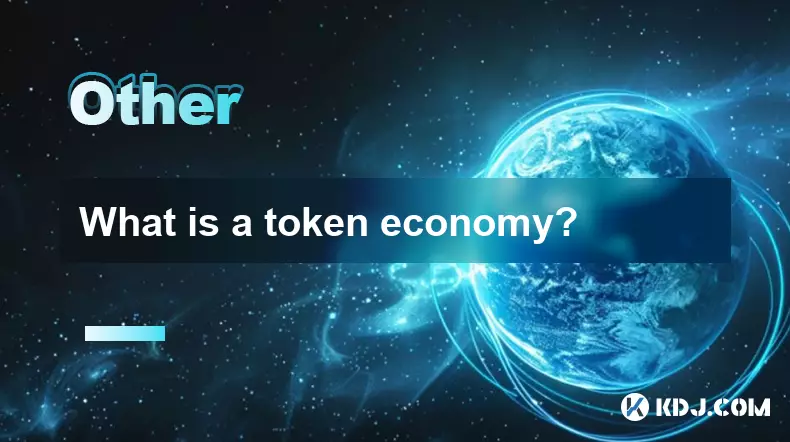
What is a token economy?
Sep 20,2025 at 12:18am
Understanding the Foundations of a Token Economy1. A token economy in the context of cryptocurrency refers to a system where digital tokens are used a...
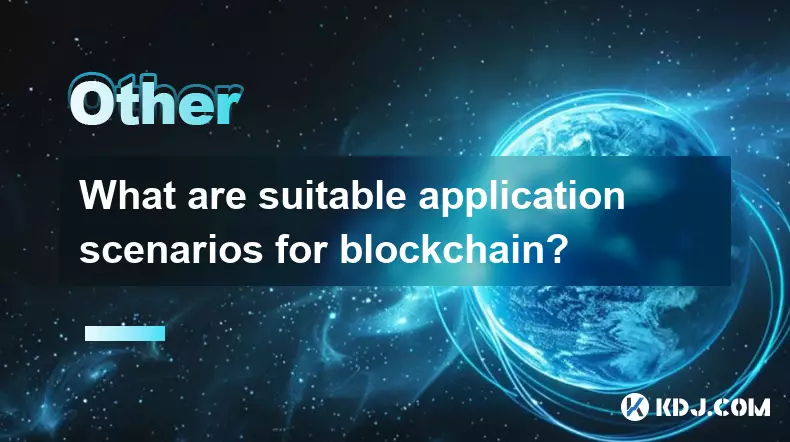
What are suitable application scenarios for blockchain?
Sep 20,2025 at 03:19am
Decentralized Finance (DeFi) Platforms1. Blockchain enables the creation of financial services without centralized intermediaries, allowing users to l...

What is a Rollup (Optimistic vs. ZK)?
Sep 22,2025 at 03:00pm
Understanding Rollups in Blockchain Technology1. Rollups are layer-2 scaling solutions designed to increase transaction throughput on blockchains like...
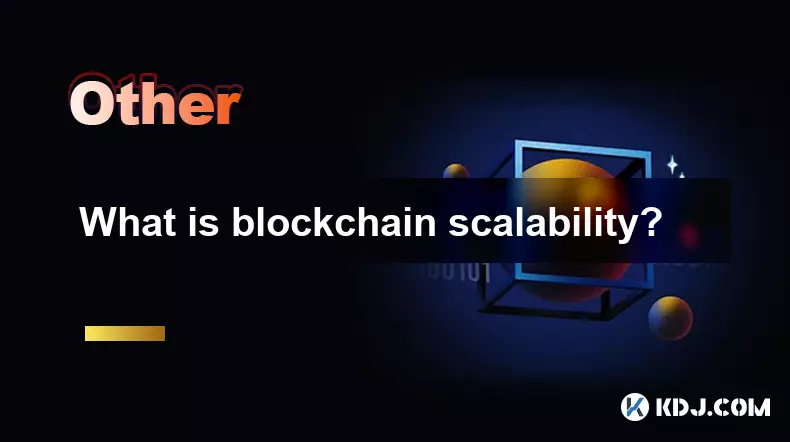
What is blockchain scalability?
Sep 19,2025 at 06:18am
Understanding Blockchain Scalability1. Blockchain scalability refers to a network's ability to handle an increasing number of transactions without com...
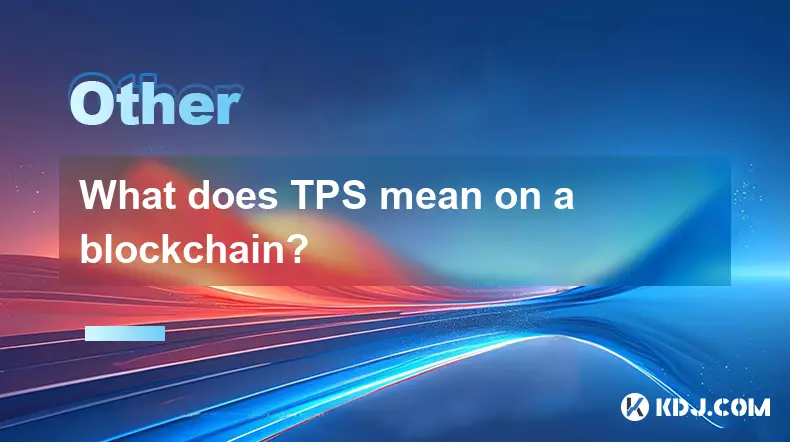
What does TPS mean on a blockchain?
Sep 21,2025 at 09:54am
Understanding TPS in Blockchain Technology1. TPS stands for Transactions Per Second, a metric used to measure the number of transactions a blockchain ...
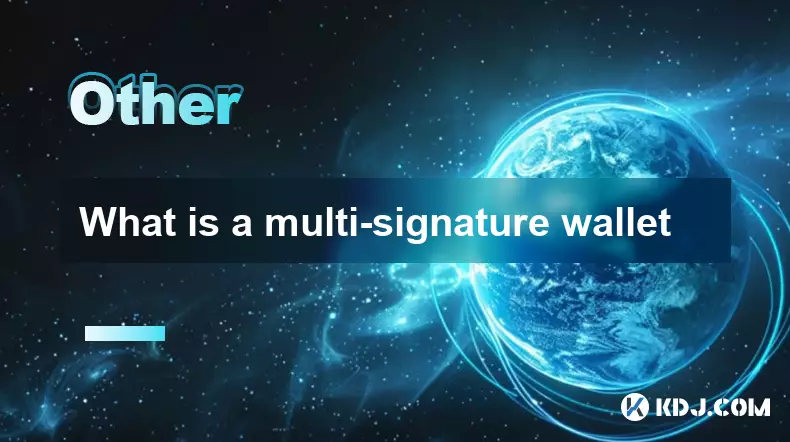
What is a multi-signature wallet
Sep 20,2025 at 07:00am
Understanding Multi-Signature Wallets in Cryptocurrency1. A multi-signature wallet, often referred to as a multisig wallet, is a type of cryptocurrenc...

What is a token economy?
Sep 20,2025 at 12:18am
Understanding the Foundations of a Token Economy1. A token economy in the context of cryptocurrency refers to a system where digital tokens are used a...

What are suitable application scenarios for blockchain?
Sep 20,2025 at 03:19am
Decentralized Finance (DeFi) Platforms1. Blockchain enables the creation of financial services without centralized intermediaries, allowing users to l...

What is a Rollup (Optimistic vs. ZK)?
Sep 22,2025 at 03:00pm
Understanding Rollups in Blockchain Technology1. Rollups are layer-2 scaling solutions designed to increase transaction throughput on blockchains like...

What is blockchain scalability?
Sep 19,2025 at 06:18am
Understanding Blockchain Scalability1. Blockchain scalability refers to a network's ability to handle an increasing number of transactions without com...

What does TPS mean on a blockchain?
Sep 21,2025 at 09:54am
Understanding TPS in Blockchain Technology1. TPS stands for Transactions Per Second, a metric used to measure the number of transactions a blockchain ...

What is a multi-signature wallet
Sep 20,2025 at 07:00am
Understanding Multi-Signature Wallets in Cryptocurrency1. A multi-signature wallet, often referred to as a multisig wallet, is a type of cryptocurrenc...
See all articles










































































